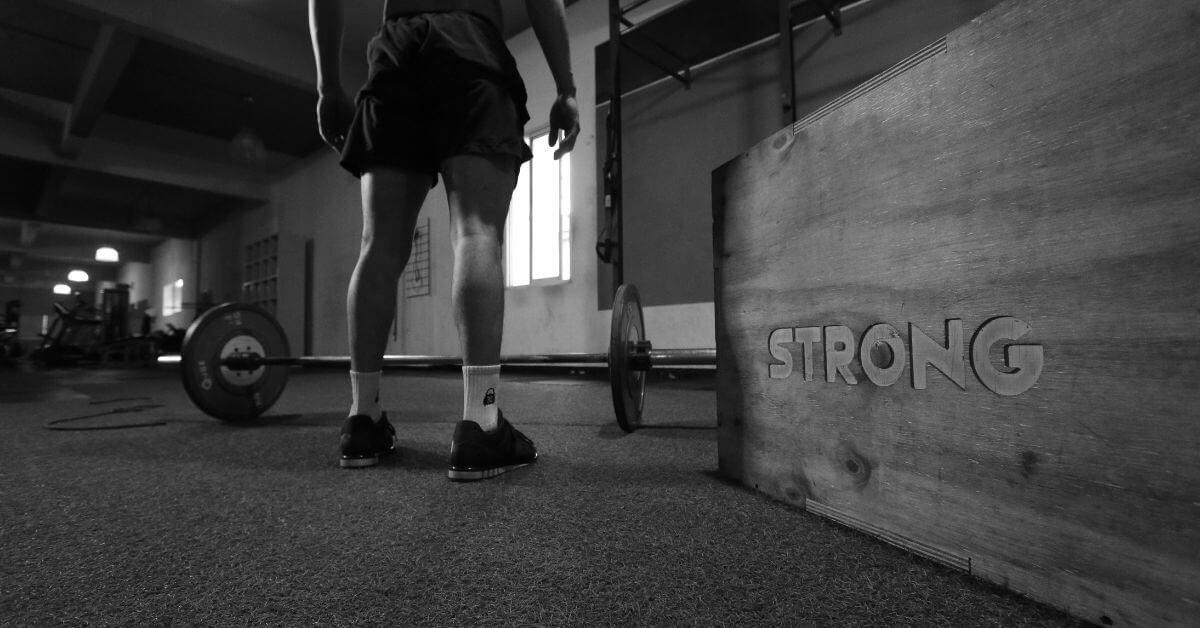Rugby, a sport demanding a unique blend of power, speed,…

The Ultimate Guide to a Performance Diet
“Healthy eating is a way of life, so it’s important to establish routines that are simple, realistically, and ultimately livable.” – Horace
Introduction
Several factors determine success in sports: Training methods and environments, mental and physical stressors as well as recovering from and managing injuries are just a few decisive puzzle pieces.
In this article, however, we focus on a different extremely important element: Performance diet.
The scientific community (Source) overwhelmingly agrees that a carefully designed diet plan leads to significantly improved performance.
Admittedly this is a broad and jargon-filled topic full of confusion. But rest assured, our intention is to provide a simple yet useful set of tips you can instantly adapt to improve your performance in the short and the long run.
Not every athlete is privileged enough to have access to a dietitian. And in times of rising food costs, buying and eating high-quality food is a true challenge.
Therefore, our guide comes with two promises:
1- Easy adaptation: No fancy or expensive foods and complicated meal prepping
2- Focus on “real” foods: No processed foods and no supplements such as powders and pills
We asked nutritional experts from all sports for their best advice and put their secrets together in the article. We reveal some delicious recipes and show you a simple method to keep on track with your aims.
Ready to eat your way to the top?
This is NOT a performance diet
Before we dive deeper into the topic, we should take a moment to remind ourselves what a performance diet is not.
This is not about getting “shredded” and building a six-pack or losing a few pounds quickly just for the sake of it. It has very little to do with transforming your body into a like-button-chase figure to showcase on Instagram.
Instead, a performance diet is all about peaking when it matters most: During the performance.
The easiest way to think about food in a performance context is to define it as “fuel”. You eat and drink to fuel the body with the energy required to perform.
Cutting body fat and getting in shape are satisfying side effects though.
In fact, the three most significant outcomes of such a diet are cutting unnecessary body fat, keeping energy levels consistently high and maintaining high muscle mass.
The word diet can be misleading in this context. Often, we associate “diets” with a temporary change in our eating habits to achieve a certain goal.
However, this is much more about a “lifestyle choice” and a performance diet, if planned and executed carefully, is a very healthy way of eating and living.
The Basics
We want to ensure that as many readers as possible can benefit from this guidance. At the same time, we understand that a “one-size-fits-all” approach with such an important topic doesn’t exist.
A lot of different facets determine the dietary requirement. Bodies, lifestyles, environments and of course the sport itself differs.
But there are some principles that apply to most athletes and people in general who want to choose a healthier and more active lifestyle.
A performance diet consists of three pillars:
Carbohydrates
The main source of energy for all forms of activities. Around 50% of the diet should consist of carbs. Healthy food sources containing high levels of carbs include fruits, vegetables, whole-grain cereals, pasta, and bread.
Proteins
Proteins are essential in muscle growth and repair. 30% of the diet should be proteins. You’ll find proteins in lean meats, eggs, beans, and many dairy products (e.g., Greek yogurt, cottage cheese and kefir).
Fats
Fats are also energy suppliers as well as regulators for healthy hormone levels. Nuts, peanut butter, olive oil and avocados are some examples of valuable fat sources. Your diet should consist of 20% of healthy fats.
What to eat and when to eat?
Now, as defined that your meals should consist of carbohydrates, proteins, and fats, let’s go a little more into detail.
When you plan and prepare your meals, it’s useful to know what should end up on your plate and what shouldn’t.
A simple table like this one can help.
Don’t forget proper meal planning begins at home before the next trip to the grocery store.
If you have the option, try to shop with your local fruit & veg store, butcher, and bakery. Most of all ingredients are available through those three shops and you support the local economy.
Adapting a performance diet doesn’t mean that your meals have to be bland and boring. Feel free to experiment with fresh herbs and exotic seasoning.
What to eat?
Below you find a comprehensive list of many inspirational meals which are simple to create and suitable for all budgets. Scroll through the list and find your favourites.
Breakfast Ideas
Wholegrain/high-fiber cereal + cow’s milk or protein-enriched and calcium-fortified milk alternative.
Wholegrain/sourdough toast + tomato + cheese — sliced, cottage or ricotta
Fruit toast + ricotta or Greek yogurt
Wholegrain/sourdough toast + shaved ham + tomato + mushrooms + avocado
Eggs (poached/scrambled/boiled) + spinach + avocado + wholegrain/sourdough toast
Porridge + milk or Greek yoghurt + crushed nuts/seeds/natural peanut butter + banana
Bircher muesli + Greek yogurt + berries
French toast + avocado + vegetable sides
Smoothie with fresh fruit + Greek yogurt
Wholegrain/sourdough toast + baked beans and sliced cheese
Omelette with spinach, mushrooms and tomato + wholegrain/sourdough toast
Wholegrain/sourdough toast + natural peanut butter or vegemite + a tub of Greek yogurt
Green vegetable bowl with roasted sweet potato + sautéed kale + poached eggs + flaked almonds
Lunch Ideas
Sandwiches on wholegrain/sourdough bread + lean meat + salad + avocado
Wrap + lean meat or cheese + salad or leftover cooked vegetables
Garden salad + roast vegetables + mixed legumes + chopped almonds
Garden salad + sweet potato + grilled chicken or tinned tuna or tofu + drizzle extra virgin olive oil.
Pasta salads filled with vegetables + chicken or tuna
Sushi with grilled chicken or salmon + seaweed salad and/or edamame on the side
Brown rice, couscous, or quinoa salad + fresh or roast vegetable + lean meat eaten cold
Baked potato + baked beans or legumes + salad + avocado
Vegetable soup + ham and cheese toastie on wholegrain/sourdough bread
Wholegrain toast + hummus + avocado + cherry tomato + feta + dukkha sprinkle
Dinner Ideas
Grilled lean meat + chargrilled vegetables or salad + baked potatoes OR crusty bread to serve
Stir-fried vegetables + chicken, beef, or pork + noodles or rice
Tomato and roasted vegetable pasta + chicken
Tuna in extra virgin olive oil stirred through pasta + green beans or other vegetables
Slow-cooked casseroles with potatoes and vegetables (all in one)
Egg frittata with sliced sweet potato + zucchini, capsicum, and feta cheese
Spaghetti Bolognese with a salad on the side or lots of vegetables included in the sauce
Lasagne made with cheese or ricotta and salad to serve, or include vegetables in the layers
Potato pie with minced beef or pork and vegetable base + extra veg to serve
Curries made with lean meat, light coconut milk, lots of vegetables, and basmati rice
Grilled fish with baked potatoes and steamed broccoli and asparagus
Homemade pizza using a wrap for the base + zucchini, eggplant, capsicum, tomato, spinach, mushrooms + some leftover lean meat and small amount of cheese
Homemade burger using a wholemeal bread roll + homemade rissole + salad vegetables + hummus or avocado as a sauce
Burrito bowls with lean mince or lentil sauce + cheese + rice or corn + tomato, onion, capsicum + guacamole
Lentil dahl with light coconut milk + snow peas, bok choy, eggplant + basmati rice, or crusty bread.
Snack Ideas
Wholemeal or grain toast with 140g tin baked beans
Wholemeal toast with 1–2 eggs your way
Toasted sandwich with ham, low-fat cheese and tomato
Low-fat or natural yogurt and fruit salad
Fruit smoothie made with milk, fresh fruit or veg, ice, and low-fat yogurt — blend and serve
Low-fat cheese sandwich on grain bread with avocado
Homemade fruit muffins or banana/fruit loaf
Peanut butter sandwich on grain bread
Grainy crackers and vegetable sticks with hummus
Celery sticks, apples, or carrots with cottage cheese
A shallow handful of nuts (almonds or walnuts) and a piece of fruit
1 slice toast with ½ cup cottage cheese and tomato
(All recipes via New South Wales Institute of Sport)
When and how often should you eat?
Fuelling your body with energy-boosting, healthy nutrition at the right times of the day is crucial.
Eating before and after exercising, ensures that the body has enough time for digestion and building muscle mass. Especially after weight training the muscle cells open and are prepared to take in nutrients.
Schedule your meals around your training routine for the best results. If you train 1–2 times a day, your daily meal plan should consist of a pre-workout “main meal”, pre-workout “snack”, post-workout meal (lunch), afternoon snack and dinner.
Nevertheless, this can vary and depends on the intensity of the training, the stage of the season, and your general health.
Training determines when you should eat. The following structure is simple and easy to use:
Start by determining at what time do you work out? Example: 11 AM
1st main meal (breakfast): 3h before workout (8 AM)
Suggestion: Oatmeal with peanut butter and an omelet with spinach
2nd meal (pre-workout snack): 1.5h before the workout
Suggestion: Bagel with peanut butter and banana
WORKOUT (11:00–13:30)
3rd meal (lunch): 30min after the workout
Suggestion: Tomato and roasted vegetable wholegrain pasta + chicken
4th meal (afternoon snack): 3 PM
Suggestion: Smoothie with berries, bananas, spinach, hazelnut milk and linseeds
5th meal (dinner): 7 PM
Suggestion: Chicken, rice, broccoli, and raspberry
With this simple structure, you can now plan your meals around your workouts.
If you train earlier in the morning (starting between 5–7 AM), it’s recommended to either have a small and quick snack 1h before the workout or just some liquids and work out fasted.
Once you’ve finished an early morning workout ensure that you refuel with a nutritious breakfast.
Matchday nutrition
If you are competing on a regular basis you should focus on a few golden rules when it comes to match-day nutrition:
Planning is key! The most efficient nutrition to compete on a matchday does not happen on the day of the event alone. The days, weeks, and even months leading up to the competition are key.
When it comes to matchday, never try unknown foods. Any changes to your regular diet should be tested prior to a training session to ensure your body is tolerating it.
The closer you get to the match, the smaller your meals should be.
Eating while traveling
Athletes who require to travel over a longer distance to the competition need to take some additional measurements to ensure peak performance during competition. Food containers with a variety of food and beverages need to be prepared.
Choose energy-packed foods such as whole grain crackers with low-fat cheese, tortilla wraps with veggies and lean meat, hard-boiled eggs, vegetable or bean soups, small boxes of non-sugary cereal, fresh fruit, mini-whole wheat bagels with peanut butter, pita bread with hummus or pasta with grilled chicken.
Pair any of these options with fruit/vegetable and milk and you’ve got a great meal.
Post-match nutrition
Once the game/tournament is over, it’s time for nutrition to promote recovery as quickly as possible. As a rule of thumb, athletes should aim for an intake of 1 g/kg of carbohydrates per hour for 4 hours after the game.
To make sure you get the most out of the game you need to introduce some protein into your meal, fish or chicken with pasta are good options. Your body and in particular your joints come under particular stress during competition as you are continuously on the move and changing direction.
20–25 grams of protein is recommended every 3–4 hours after exercise (which can be achieved, for example, with about 100 grams of chicken breast or just over half a liter of milk).
Conclusion
The goal of every athlete is to gain an advantage over their opponents. An intense training and match schedule requires a well-thought-through meal plan to meet these physical demands.
In this article, we determined and defined the importance of a performance diet, with the aim to provide clear and simple guidance to achieve success when it matters most.
We explained the basics of nutrition, a time scale for when and what to eat, and a number of inspirational meal ideas for all occasions.
Eventually, we provide guidance on how to fuel your body on a match day.
What is your experience with performance nutrition? What are your favourite meals and your best tactics to maintain a healthy nutritious diet?
Keywords:
athlete food, athletic diet, diet for athletes, diet plan, diet for exercise, exercise diet plan




